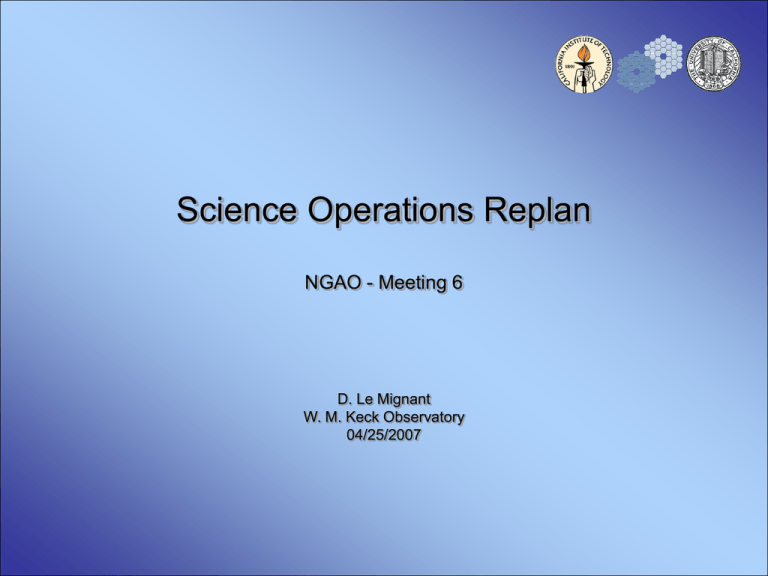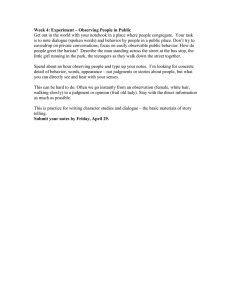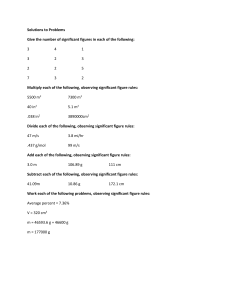Science Operations Replan NGAO - Meeting 6 D. Le Mignant
advertisement

Science Operations Replan NGAO - Meeting 6 D. Le Mignant W. M. Keck Observatory 04/25/2007 Main points The Original Plan for Science Operations Progress Update Comment on the Work What’s next: the replan Priorities in the replan Risk/challenges 2 The Original Plan System Design Approach System Engineering Performance budget Trade Studies Observing Efficiency Budget 100 hours Observing Models TS 80 hours Science Operations 3.4: Science Ops Functional rqts 670 hours Rationales for Functional and Performance Requirements Observatory Rqts Science Operations 64 hours Should be done easily… and in time!! 3 Progress Update System Design Approach System Engineering Performance budget Trade Studies Observing Efficiency Budget Observing Models TS: KAON 476 Science Operations 3.4: Science Ops Functional Rqts Main Drivers & Risk Areas Current LGSAO Operations Assessment Report: KAON 463 Rationales for Functional and Performance Requirements Observatory Rqts Science Operations Observing Scenarios Science Requirements 4 Comments on the Work: • The plan for the science operations was not interactive enough among WBS. – Should coordinate with other critically related WBS (e.g., Observing Scenarios) – Many items in the SEMP, but can we deliver the right work? – How much will we be able to iterate on the design? • Contributors were not able to commit significant effort and attention – Not aware of the science case, science instrument and the literature on the subject – Contribution at best consisted in comments – Finding compelling reviewers is difficult -> quality of report? • The work is more organic than expected. – Observing Scenarios requirements don’t always translate into science operations requirements (e.g., photometry reqts) – Slower work than expected (“less earned value”), but significant progress in building requirements for the science operations. – The cost/benefit analysis is not an objective exercise: there are as many biases as people, and less people could produce a greater risk for bias! 5 What’s next: the replan System Design Approach System Engineering Performance budget Trade Studies Observing Efficiency Budget Observing Models TS: KAON 476 Science Operations 3.4: Science Ops Functional Rqts Main Drivers & Risk Areas Current LGSAO Operations Assessment Report: KAON 463 Rationales for Functional and Performance Requirements ?? ?? ?? Observatory Rqts Science Operations Observing Scenarios Science Requirements 6 Priorities in the replan • Validate/discuss the Observing Model trade study with Keck directors. – Large cost driver in the long term. More analysis required? • Need to complete the Observing Scenarios and provide a version1 for the flow of Science Operations Requirements – Observatory Requirements for Operations • Planning operation cost control in the long term • Data quality, observing efficiency, science data products? – Science Operations Functional Requirements • Simulation tools, Observing tools, PSF reconstruction • Is a list of functional requirements enough and should we need more details? • Coordination with laser, AO and science instrument functional requirements • Document the main drivers for the Observing Efficiency budget • Telescope, AO, instrument overheads versus performance and cost 7 Risk / challenges • Encounter the same difficulties we have seen so far: – Coordination among WBS, particularly for science operations (AO, laser, Science instrument) – Finding experienced scientists and engineers for reviews/discussion of the documents • Difficulty to provide a good estimate for the effort – What is the work quality that needs to be provided: how accurate should the study be? – Not everything deserves the same priority and the same attention: how do we take this into consideration? 8 Science Operations Requirements Mission for the science operations be to: maximize the scientific impact of the TAC allocated observing time with the NGAO instruments from 2012 to 2020. • Top-level goals from the science requirements: 1. Science-grade quality of the raw data (image quality per science requirements, completeness of observations) 2. Science-grade quality of the data products (photometry, astrometry, PSF knowledge, WCS calibrations) 3. Science impact from a given data product (number of publications and citations) • 1. 2. 3. Top-level goals from the observatory: More than 80% of the time allocated is spent on collecting science-quality data. The NGAO combined with its science instruments is facility-class instrument. The Observatory is capable of supporting the equivalent of 240 nights/year for NGAO science operations. 9





